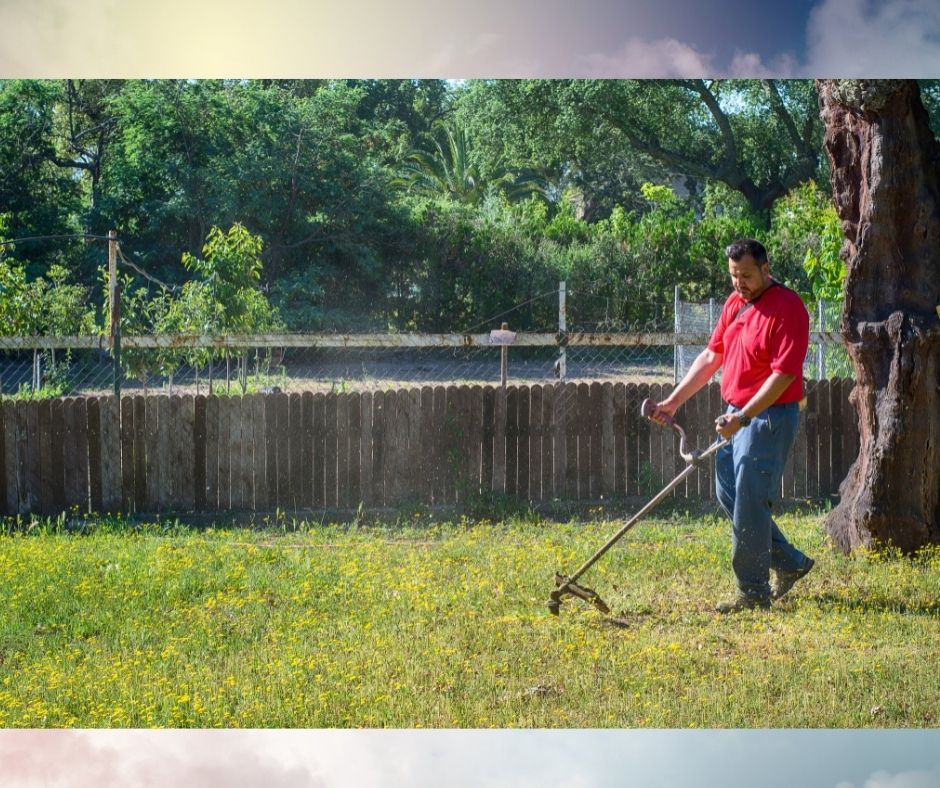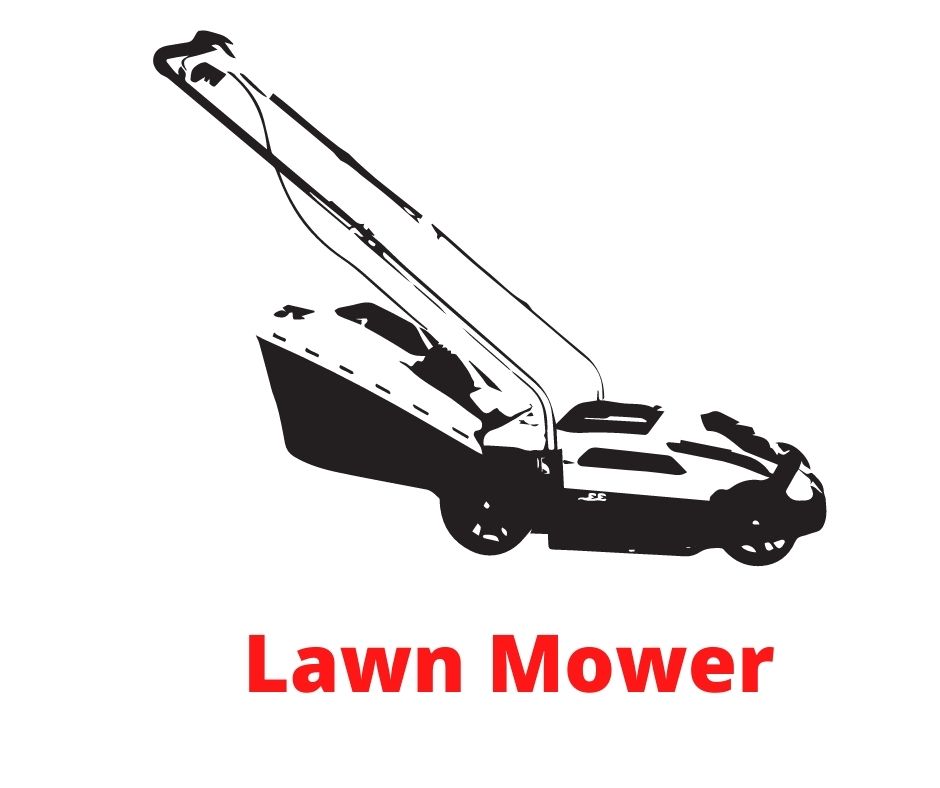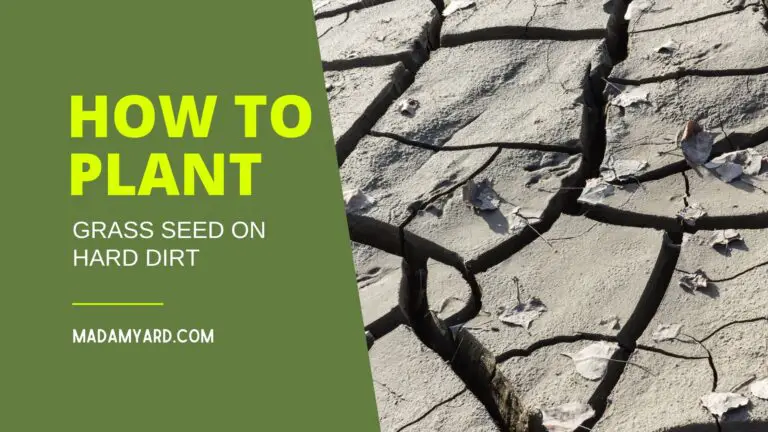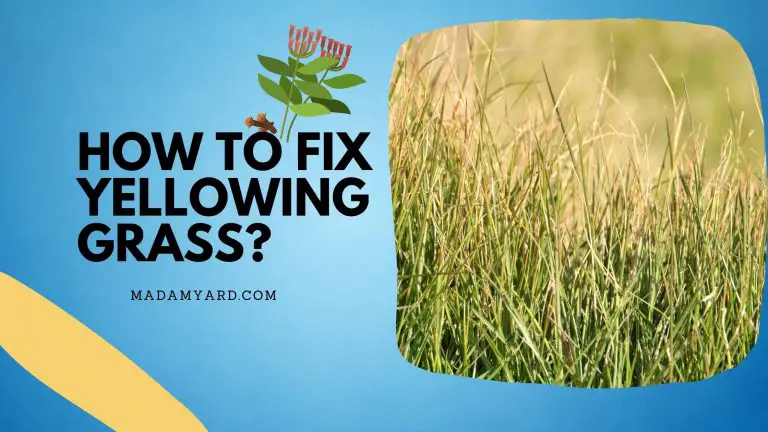Weed Eater Vs. Weed Whacker: Is There A Difference?
If you’re looking for the difference between Weed Whacker vs. Weed Eater then, you’ve come to the right place! In a nutshell, Weed Whacker and Weed Eater refer to the same type of equipment.
Many people interchange the terms “weed eater” and “weed whacker” to designate any small gasoline-powered gardening instrument that cuts weeds, grass, or other plants with a thin nylon line.
These tools, however, are string trimmers or weed trimmers, which come in a variety of styles.
Edging and trimming using string trimmers requires navigating in tight and difficult-to-reach areas, such as between chain link fences.

Weed Whacker or Weed Eater: They Are Both Just The Same
When someone says “weed eater,” “weed whacker,” or “weed wacker,” there is typically no difference between what they mean. These terms all relate to the same piece of machinery.
It’s nothing more than a string trimmer. For a long time, I mistook weed whacker for a heavy-duty brush cutter (with a metal blade), but it turns out that it’s usually simply another name for a string trimmer.
Why are there so many distinct names for the same thing? Let’s look at why these two terms have grown so confusing.
Repurposing Brand Names
The Weed Eater’s creator invented the brand, but other firms began making identical products under other names.
Purists may claim that the term “weed wacker” is incorrect because it isn’t what the inventor called it, but this is arguable because “Weed Eater” and “Weedwacker” are both brand names, not generic phrases.
It’s rather typical to turn a brand name into a generic phrase. Things like Band-Aids, Velcro, and Sheetrock come to mind.
Each is a part of our daily existence. These brand names have become part of our everyday language, and we now refer to them as generic words.
Regionalisms
There appears to be a regional factor to which name individuals choose to use. “Weedeater” seems to be the preferred term in the United States’ southwest area.
In the United States, regionalism is widespread. One of the most well-known debates is whether sugary carbonated beverages are soda, coke, or pop. So the weed eater isn’t the only product struggling to find its place in the world.
What Is The Difference Between A Brush Cutter And A String Trimmer?
You can access hard-to-reach areas using a string trimmer, also known as a weed whacker, when you have overgrown weeds. Instead of blades, it employs a monofilament line, which can quickly break if not utilized properly.
They’re small and lightly used to cut weeds and grass. Weed wackers come in many varieties, including cordless battery-powered variants, gasoline-powered models, and electricity-powered ones.
The main benefit of owning a decent string trimmer is that it can perform tasks that a land mower cannot.
You’ll be able to get rid of weeds on sidewalks, driveways, and fences. Also, he can tidy up flower beds. Providing you with a tidy yard! Some string trimmer models include a revolving head that may be used as an edger.
On the other hand, a brush cutter does the same thing but with more force. It doesn’t cut by line like a string trimmer; instead, it uses a sharp blade that allows it to cut through thicker items.
Because they have a blade, they are a little heavier than a string trimmer, and this equipment can chop through 4-inch thicker tree trucks. Both machines, however, are functional and ideal for a variety of tasks!
What Is A Weed Eater?
Weed eaters are an excellent tool for weed control. Many of them may also be used as edgers to keep the edges of your walkways, patios, and driveway tidy. Another name for weed eaters is weed whackers.
A weed eater operates by rapidly spinning a hard-plastic thread. Any grass or weeds that the string comes into contact with will be cut off at the point of impact.
Small and agile, these machines have a long pole that allows you to reach the spinning head to the ground without bending down.
Weed eaters may be found that run on gas, electricity, or batteries. To cut the weeds, they all use spools of string, referred to as string trimmers in retailers.
However, the first string trimmer was known as the Weed Eater, which is perhaps why some folks still refer to string trimmers as weed eaters today.
How Are Weed Eaters Used?
We shall see how a Weed Wacker works from the lines below; for a better understanding, we have prepared this post step by step. Stay with us to the end in the hopes that it will be beneficial to you all.
1. Protect Yourself
Using this equipment in the field might result in severe injury or damage, and we must protect ourselves when utilizing it. As a result, when using this machine, use safety eyewear, anti-cut gloves, and sturdy shoes. These will shield your hands, eyes, and feet from harm in the event of an accident.
On the other hand, if you’re going to use this trimmer in hot weather, be cautious of your clothing and attempt to stay hydrated. Because you never know how long it will take to complete a task, it may exceed your expectations.
2. Define The Areas
Determine the areas where you wish to work before you begin cutting. It will save you time and ensure that your task completes systematically. It also prevents the trimmer from being damaged, as you can’t trim everything with all the trimmers.
3. Place The Weed Wacker And Turn It On
You should be aware that it vibrates when you switch on a weed whacker. As a result, you must maintain a tight grip on the trimmer. You will see a directional arrow on the machine that intends to guide you.
Next, turn on the trimmer by pressing the start ignition switch next to the handle. Starting triggers can be set in many locations depending on the model.
4. Start Trimming
Trimming weeds with a trimmer is best done by moving the trimmer from side to side. Uphold the trimmer head about 3-4 inches from the ground level, depending on the grass or weed level you wish to trim, for better trimming and to ensure the safety of the trimmer head.
Other items will be shredded if you hold the trimmer too near the surface. While trimming, try to discover the guiding arrow; it will lead you appropriately and ensure that the trimmer does not hurl the weeds back at you. Weeds have such a great density and height that getting rid of them totally may require two attempts.
5. Learn How This Machine Works
You may regulate the speed of the Weed Whackers if you wish. It features a speed regulator on the handle that controls the speed.
When you turn on the trimmer, the trimmer string spool spins, and the head spins independently in its case. As a result, the extension cord visible outside the skull begins to spin as well.
This spinning motion helps the string cut the weed and restore your garden to its former glory. You’ll be able to control the speed of the action at that point, and your cutting will get quicker.
These strings or trimmers’ heads may become less worthy of cutting over some time, with many of the time strings worn out. Don’t worry, as we already stated.
6. Storing The Trimmer
If you intend to keep the equipment for an extended time, you must follow some instructions to ensure it remains in good working order. First, you must let it cool down after each use; you should never keep a hot machine.
It should be kept away from combustible things. Keep it in a cool, dark area away from direct sunlight. Never leave the machine hanging or in an area with dampening concerns.
Wrap it up and try to store it on a flat concrete surface. If you’re saving a gas-powered machine, ensure the tank is empty. Many accidents are avoided as a result of this.
Types Of Weed Eater/Weed Whacker
Electric Trimmers
1. Corded Electric Weed Trimmers
Although there are two types of weed eaters—gas-powered and electric—we’ve opted to divide the electric version into corded and cordless/battery-powered varieties since they differ at some point.
The corded-electric trimmer now requires a continual connection to a power outlet to function. Even though they’re best suited for tiny lawns and yards, their use is unavoidable if you have a lengthy cable.
Because they don’t have motors or large battery packs, these weed eaters are lighter than gas and battery-powered models. They’re also quieter than gas and cordless models, and they don’t produce any pollutants, making them ecologically friendly.
2. Cordless/Battery-Powered Weed Eaters

Finally, there are cordless variants. The best thing about these weed eaters is that they’ve tried to compensate for both the gas and corded weed trimmer versions’ flaws.
They’ve done it by combining some of the essential elements of both weed eaters to improve your trimming experience.
For example, these trimmers have selected the mobility of gas trimmers while disregarding the dirty gas and oil combination and the loud noise and exhaust fumes that come with gas trimmers.
3. Gasoline-Powered Trimmers
They are available in two versions: 2-stroke and 4-stroke. The 2-stroke employs a combination of gas and oil, whereas the 4-stroke simply uses gas.
Regardless of whatever model you choose, both have a high torque motor that allows them to do tough cutting chores like clearing shrubs and clipping stubborn weeds and grass.
Unlike battery-powered trimmers, gas weed eaters have a lot of movement, so you can cover a lot of ground as long as you have enough gas in the tank. Perhaps one of the most significant advantages of using these weed eaters instead of electric mowers.
Tips For Starting A Weed Eater
1. Check The Gas Tank
Some individuals may not realize that their gas tank is empty until it is too late. They believe their string trimmer isn’t working properly, only to realize later that the gas tank is empty.
Before assuming that it is hard-starting, make sure you have adequate petrol in your tank. It may seem self-evident, yet we may all make dumb mistakes from time to time!
2. Use A Spark Plug Wrench
Carbon deposits on the rim point of the spark plug might sometimes prevent it from starting. Remove any carbon buildup and clean the spark plug with a tiny flathead screwdriver or steel wool if necessary.
However, you must be cautious when removing the carbon buildup to avoid breaking the white ceramic insulator on the head. After removing the carbon, you may reinsert the spark plug into the chamber.
Put the choke on three times and prime it. You must wait 4 seconds before priming it again every time you prime it.
3. Pull The Starter Rope
Now that you’ve gone through the preceding procedures try starting your string trimmer again. Continuously pull the starting rope until the engine starts.
Because the choke is the initial step, it must rev up a little before coming to a halt. Remove the choke and pull the starting rope many times more.
The engine should start if the spark plug is in excellent condition. The engine, however, will not start if it is already dead. In such a situation, you’ll need to replace the spark plug.
However, make sure you use the right spark plug. Make a note of the old spark plug’s number and place an order for a replacement.
4. Clean The Spark Plug Arrestor Screen
This feature prevents hot particles from escaping via the muffler. Hot particles escaping from the muffler might produce harmful sparks, starting a fire.
On the other hand, the plug arrestor screen might get clogged, and it might cause the engine not to start if it is blocked. So you’ll have to clean it before reinstalling it.
You should start practically any gas weed eater by following the steps above. If you still can’t get it to start, you might need to take it to a professional to see if they can diagnose the issue.
Weed Eater Safety Tips
Wear Safety Equipment
When you use a weed cutter, you should expect flying debris, twigs, soil, stones, and tiny branches. The majority of these particles are razor-sharp and can injure people. To safeguard your eyes, you must wear safety goggles.
To protect your hands, you should also wear thick gloves. Working barefoot or in sandals is never a good idea, and you must wear heavy boots with sufficient traction and protection for your feet. If you’re working with strong, noisy equipment, use earplugs to safeguard your hearing.
Periodically Check The Tool
It is critical to inspect the tool for damaged parts regularly, and it might happen after one or two usages or during routine checks. Most gardeners neglect these inspections and then use the item, saying that it is defective and of poor quality.
Checking that everything is in position and in good operating order, just like any other piece of machinery, will ensure that the tool delivers optimal and spectacular results.
Protect Yourself And Other People
When using the weed eater, it is suggested that you wear protective clothing. Wearing protective clothes in the form of an overall that covers both your arms and legs is recommended.
It’s a must to wear goggles to protect your eyes from flying items. It’s also a good idea to wear a scarf covering your nose and mouth.
Close windows and doors around you when using the weed eater tool, and keep an eye out for any pets or small children who may be captivated by the tool and pulled closer to where you are working, resulting in injury from flying debris and particles.
Start The Engine On Firm Ground
When starting the weed eater instrument, the gardener has two options. The first is to lay it down and start it while holding it firmly to the ground; the second is to start it while holstered to the gardener’s safety belt.
Overall, these two techniques of beginning the tool should be performed in an open area to minimize any potential harm from the machine’s impact. When starting the tool, the hard ground offers essential stability.
Adjust Weed Eater Speed
The best cordless weed eater has speed settings that let the user adjust the speed depending on the task at hand, the nature of the work, and the level of efficiency necessary.
Gardeners should know when to use the equipment at a low speed in residential areas and when to use it at a high pace in non-residential regions.
It’s vital to remember that a greater speed causes the machine to make a louder noise, while a lower speed causes the tool to create a softer sound.
Any gardener should be able to determine the speed to utilize based on the amount of noise produced.
Operator Awareness
As previously said, the weed eater tool operator must be aware of people and pets in the area where he is working. Flying debris and grass clippings may not cause major injury, but they will inflict agony.
The operator should sweep away any stones or shattered debris to ensure that the tool’s blades do not come into contact with them.
Turn Off The Tool
When you are done with your job, turn off the weed cutter and let it cool before setting it down or storing it. Unless the tool is turned off, never clean it or conduct maintenance.
Maintaining Weed Eater
It is critical to maintain your weed eater, regardless of the kind, properly. They require even more weed removal after a successful weed removal session. Weed eaters can last longer if they are cleaned and maintained regularly. Sure, the work is time-consuming, but it isn’t very tough.
It’ll only take you a few minutes after you’ve got your hands positioned. Weed eaters need to be maintained in the same way regardless of their brand or model.
Here are some of our best recommendations to help you do the assignment efficiently and effectively:
Properly Follow The Manual
A user’s handbook will be included when you buy a weed eater tool from your local hardware shop. You must read the handbook if you want to know how to use the weed eater effectively.
You’ll be able to unscrew and rebuild your complete weed eater with ease. One of the most typical issues is that the Weed Eater will not start after a period of inactivity. If you know how to disassemble and clean it, you should solve the problem.
Check The Fuel Filter
Every gas weed eater comes with a fuel filter. The oil is cleaned, and this filter removes any dirt or contaminants in the gasoline.
This method ensures that only pure, filtered oil reaches the engine. Consequently, the engine will be dustproof and have a long service life.
The gasoline filter might be found in the fuel tank or elsewhere along the fuel line. If your engine makes rumbling noises, it’s an indication that there’s dirt in it and that your fuel filter needs to be replaced.
Regularly Clean The Air Filter
Every engine relies on the burning of fuel. And you’ll need pure oxygen to light the gasoline.
The air filter comes in handy in this situation. It cleans the air by removing all dust and dirt particles and providing clean oxygen to the equipment.
The engine will not start or work correctly if dust particles are present in the air because clouds of dust will obstruct the combustion process.
After 5 hours of use with the weed eater, clean the air filter. You’ll get the most out of your air filters and breathe cleaner air this way.
Use The Proper Cleaning Agent
Cleaning a weed eater is the first and most critical step in keeping it in good working order. You’ll also need some cleaning products for this; however, any cleaning solution or detergent will not suffice.
If you use a strong detergent, it may cause harm to the machine’s structure.
As a result, stay away from harsh and powerful detergents. On the other hand, simple dishwashing detergents can be used, and they are soft and can readily clean the instrument, and they also do not pose a hazard to the machine’s construction.
Empty The Fuel
You will be able to eliminate any oil particles that have settled in the tool by doing so. Otherwise, the weed eater’s life expectancy may be jeopardized. Left-over fuel in weed eaters can result in carbon, varnish, and gum on various sections of the weed eater.
After emptying the tank, pull the cord a few times to clear any fuel from the weed eater’s lines or carburetor. Make sure the fuel lines, valves, carburetor, and other clear components. You might also try adding a gasoline stabilizer to the gas can.
Replacing Weed Eater String
The string, which is the main component of the weed eater, keeps the trimmer spinning. To make the tool operate, you’ll need the right strings. On the other hand, these strings are not unbreakable and can be degraded over time.
As a result, they must be replaced. The more you change the strings on your tool, the more sturdy and long-lasting it will become.
Because if you utilize broken strings, the system may shut down unexpectedly, requiring many restarts. You’ll have a perfectly functional weed eater if you change the string every three months.
You may either reload the old spool with a new trimmer string or insert a pre-loaded spool to replace the string. Reloading an old spool is less expensive, but it takes longer.
Regardless of the approach you use, altering the string is not complicated. If you use a replacement string, make sure it’s only 0.065-inch; otherwise, your trimmer will be damaged.
Can A String Trimmer Be Used As An Edger?
A string trimmer may be used to produce an edge with a little practice. It won’t be as polished as you’d get with a dedicated tool, but it’ll be enough for me.
It is, however, not a perfect option. The following are some of the reasons why you shouldn’t use a string trimmer as an edger:
Unless you’re an expert, you might mutilate your lawn’s edge. Depending on the degree of the damage, it may take some time for your grass to return to normal. Until I got the hang of it, my grass looked like it had mange.
When compared to utilizing a specialized edger, it’s a touch unpleasant. The reason for this is that you’re holding the string trimmer in an unnatural posture, effectively flipping it upside down and resting it against your shoulder.
It’s worth mentioning that specific trimmers, like the WORX WG170 GT, have an edging wheel, allowing you to edge your lawn without purchasing an additional piece of equipment.
Use your string trimmer as an edger if it was built for that purpose. On the other hand, a specialized tool is typically your best chance for fully groomed results.
Conclusion – Weed Eater Vs. Weed Whacker
It’s not simple to keep your grass healthy and lovely. However, if you use the appropriate equipment, your neighbors will continue to admire your lawn as long as you maintain it regularly. That is why you will want both the weed wacker and the lawnmower.
A lawnmower is fantastic for leveling grass on your lawn, but a weed wacker is best for cutting grass and weeds that a lawnmower can’t. If you insist on picking one, be sure it’s the proper one.
If you want to trim grass to a set height, you’ll need a lawnmower.

In addition, a lawnmower covers a bigger area than a weed wacker.
A weed wacker or weed eater, on the other hand, should be used to cut grass in regions where a lawnmower cannot.
If you choose between a lawnmower and a weed wacker, many experts recommend the lawnmower.
It is because you don’t want to spend your entire day trimming a little area that a mower can clean in a matter of minutes.







